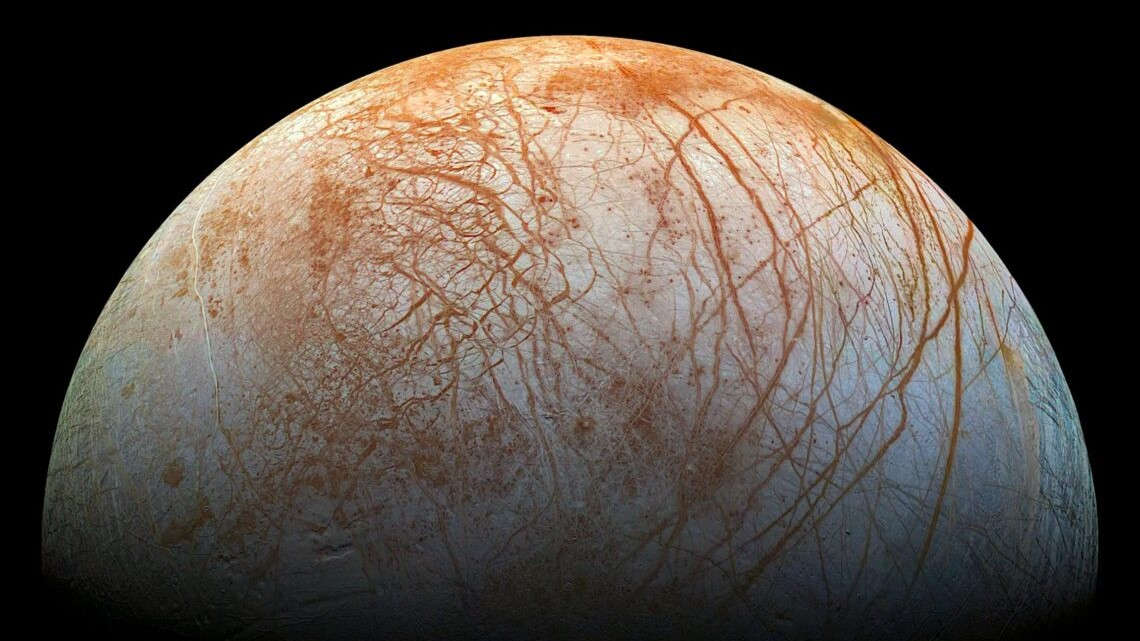A recent laboratory study has revealed that a solitary ice grain propelled into space through subsurface boiling could potentially contain adequate material to identify indications of life on one of our solar system’s moons.
Scheduled for launch later this year is an instrument equipped with the capability to detect such signs, targeted towards specific celestial bodies.
The primary contenders in the quest for extraterrestrial life are the ice-covered oceans of certain moons within our solar system.
Illustrated is an artist’s depiction of Enceladus, one of Saturn’s moons, exhibiting hydrothermal activity on the seafloor along with cracks in the crust.
Jupiter and Saturn are renowned for their moons, engaged in a perpetual rivalry for supremacy. However, the significance of the satellites encircling these gas giants transcends mere numbers.
Prior to its conclusion in 2017, NASA’s mission unveiled fissures near the southern pole of Saturn’s moon Enceladus, from which plumes of gas and ice were emanating.
A forthcoming NASA mission, named Europa Clipper, is slated for an October launch. It will carry advanced instruments like the (SUDA) to delve even deeper into the icy Jovian moon Europa.
The outcomes of the researchers’ investigations utilizing these instruments have been documented in the journal Science Advances.
Rather than replicating the SUDA traversing through ice plumes at speeds of 4–6 km/s, the scientists opted to simulate the instrument’s observations by directing a laser beam at droplets to mimic its perspective.
Their focus was on Sphingopyxis alaskensis, a bacterium commonly found in Alaskan waters.
Typically, studies employ Escherichia coli as a model organism. S. alaskensis thrives in frigid environments with minimal nutrients, rendering it more suitable for emulating potential life on icy moons.
Lead author Fabian Klenner from the University of Washington notes, “They are extremely small, theoretically capable of inhabiting ice grains emitted from ocean worlds like Enceladus or Europa.”
Klenner emphasizes, “For the first time, we have demonstrated that even a minuscule amount of cellular material could be identified by a spacecraft’s mass spectrometer.” He adds, “Our findings instill confidence that forthcoming instruments could detect life forms akin to those on Earth, which we speculate may exist on ocean-bearing moons.”
The left illustration portrays Enceladus with its ice-enveloped ocean, featuring cracks near the southern pole believed to penetrate the icy crust. The middle panel highlights the potential habitats for life: near the water’s surface, within a proposed thin layer akin to Earth’s oceans. The right panel illustrates how bacterial cells might be propelled into space with droplets that crystallize into the ice grains detected by Cassini. Credit: European Space Agency.
The same group of researchers published a study last year unveiling the presence of phosphate on Enceladus. The combination of energy, water, phosphate, salts, and carbon-based organic compounds on this icy moon suggests the plausibility of hosting life akin to Earth’s.
The researchers speculate that bacteria on other worlds could be encapsulated, similar to single-celled organisms on Earth, within a lipid membrane. Residues of these membranes could form a film on the ocean’s surface, which may be ejected into space when the subsurface ocean boils and releases plumes.
The left panel depicts the kilometers-thick icy shell enveloping Saturn’s moon Enceladus. Within the crevice lies saline water with a proposed thin surface layer. The right panel illustrates the amalgamation of gas bubbles with organic material as they ascend and burst, eventually mingling with the spray. Credit: Postberg et al. (2018)/Nature.
Klenner expresses his enthusiasm for the quest for lipids or fatty acids over DNA building blocks due to their perceived stability.
He further elaborates, “Here, we present a plausible scenario for the incorporation of bacterial cells into icy material formed from liquid water on Enceladus or Europa, subsequently emitted into space.”
